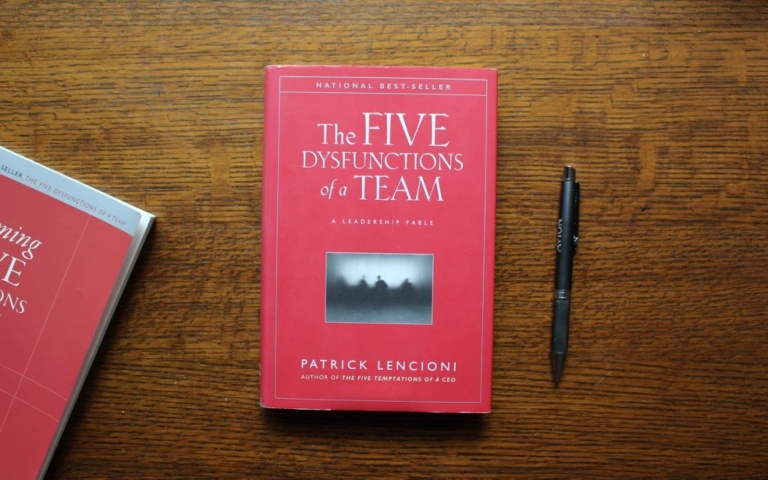Subscribe for all the latest news
"*" indicates required fields
Home | 7 Leadership Techniques to Influence and Build Trust with Multi-Generational Teams

The modern workforce now spans four to five generations, each shaped by different economic, cultural, and technological influences. Millennials (born 1981–1996) and Gen Z (born 1997–2012) now make up the majority, and they expect their leaders to provide meaningful feedback, inclusive environments, and clear paths for development.
For any leader, learning how to influence and build trust in this evolving context is not optional—it’s essential.
The cornerstone of leadership is trust. Research shows that leaders who demonstrate emotional intelligence and authentic interest in their team members’ wellbeing are better equipped to lead across generations.
Start by creating moments for genuine connection: check-ins, listening sessions, and informal feedback loops. Show up consistently and make your values visible. These habits reinforce your interpersonal ability and credibility.
Incorporating techniques from leadership training programs that focus on soft skills can elevate your ability to lead with empathy and purpose.
Clear communication is essential in any leadership context. But in a multi-generational team, it becomes even more critical. Younger employees want transparency—they value open dialogue and leaders who explain the “why” behind decisions.
Use multiple channels to meet people where they are—from brief video messages and Slack posts to face-to-face conversations. Focus on clarity, not complexity. Leaders with strong communication skills consistently rate higher in trust-building.
Leadership and management courses consistently highlight communication as a core driver of team performance, yet it’s often overlooked in practice.
Purpose is a powerful motivator, especially for Millennials and Gen Z, who want their work to have meaning. Great leaders articulate a compelling vision and connect daily tasks to larger goals.
Patrick Lencioni’s framework from The Five Dysfunctions of a Team underscores the need for commitment—people won’t commit if they don’t buy into the vision. That’s why communicating the “why” is just as important as setting the “what.”
When you focus on how to influence and build trust through shared purpose, you tap into intrinsic motivation and enhance engagement across all generations.
Psychological safety is a critical condition for collaboration. It means creating a team culture where individuals feel safe to speak up, ask questions, and admit mistakes without fear of judgment.
This aligns with Lencioni’s first dysfunction: the absence of trust. Without trust, teams operate in silos, and younger employees may disengage or feel undervalued.
Leadership training that integrates DEI (Diversity, Equity & Inclusion) practices is especially helpful in developing inclusive leadership qualities. The best leadership qualities aren’t only about decisiveness—they’re about making space for others to thrive.
Millennials and Gen Z are hungry for mentorship, not micromanagement. They want leaders who invest in their growth and provide actionable feedback. Formal mentorship programs can help, but even informal guidance matters.
Adopt a coaching mindset: ask powerful questions, challenge assumptions, and celebrate progress. Influential leaders position themselves as partners in their team’s growth.
Leadership and management courses increasingly teach coaching as a foundational skill—and it’s paying dividends in performance and retention.
Feedback is not a once-a-year activity. It should be timely, specific, and development-focused. Gen Z, in particular, prefers frequent micro-feedback over annual reviews.
Make feedback part of your team’s rhythm: include it in weekly stand-ups, project retrospectives, and 1:1s. Use tools like Start/Stop/Continue or Situation-Behavior-Impact (SBI) models to keep it constructive.
Knowing how to influence and build trust includes being honest, not just kind. Constructive feedback, delivered with respect, accelerates growth and builds loyalty.
If imitation is the highest form of flattery then role modelling exceptional behaviour precedes it.
Trust is built through example. Leaders set the tone with their actions more than their words. If you want a culture of accountability, you need to show accountability. If you value creativity, share your learning process and admit your missteps.
This aligns with Lencioni’s principle of accountability. High-functioning teams hold each other accountable, but it starts with the leader modelling it first.
By demonstrating the leadership qualities you expect from others, you influence without forcing compliance—and that’s where real trust is built.
Here are three evidence-backed techniques leaders are using today:
Reference: Forbes Leadership Council insights, 2023.
Reference: Harvard Business Review, “The Feedback Fallacy.”
Reference: LinkedIn Workplace Learning Report, 2024.
For those of us who grew up with traditional mentoring and leadership methods, newer approaches can feel clunky or unfamiliar. But if we reflect on how previous generations would have understood psychological safety or established systems that championed diversity, equity, and inclusion (DEI), and how they have been able to adopt these programs as time has shifted on, then this will give us the courage and the curiosity to learn how to adapt.
These shifts aren’t about discarding experience; they’re about evolving leadership to meet the expectations of today’s workforce—where belonging, open communication, and inclusive leadership are essential. By embracing these new practices, we build on the strengths of the past while creating a more resilient and empowered future.
The ability to lead effectively in a multi-generational workplace isn’t just about age diversity—it’s about adaptability, self-awareness, and a commitment to growth. When leaders prioritise how to influence and build trust through communication, purpose, and authenticity, they become catalysts for high performance.
Invest in your leadership training. Sharpen your interpersonal ability. Revisit the best leadership qualities and put them into practice. The more you integrate these principles, the more natural your leadership presence becomes.
Leadership isn’t about being the loudest voice in the room. It’s about creating space for others to succeed—and knowing that trust, not control, is the real currency of influence.
Key References:
Emerging generations, particularly Gen Z and Millennials, value autonomy, transparency and purpose over hierarchy and command. They’re less responsive to positional authority and more engaged by leaders who build trust, communicate clearly and demonstrate emotional intelligence. Today’s leaders must shift from directing to aligning—using ethical influence, active listening and shared values to create commitment and ownership.
Manipulation relies on pressure, control or hidden agendas. Ethical persuasion, on the other hand, is rooted in clarity, mutual respect and alignment of goals. It involves guiding a conversation through trust-building, storytelling, reciprocity and emotional intelligence. Ethical persuasion doesn’t override someone’s will—it creates the conditions for voluntary, engaged participation.
Start by building trust and rapport. Understand what drives your team—ask questions that uncover their values and motivations. Use storytelling to make your vision relatable and relevant. Lead with transparency and a genuine intention to collaborate. Techniques like the agreement frame, matching communication styles and seeing objections as opportunities to connect can significantly increase your influence without coming across as forceful or transactional.
Seven key techniques stand out: building trust and rapport, developing soft skills, storytelling, using reciprocity, leading with emotional intelligence, understanding cognitive biases and transforming objections into opportunities. These techniques, discussed in the blog, help leaders communicate in ways that resonate across age groups—creating inclusive, high-performing, and values-aligned teams.
At Life Puzzle, we are always working to find greater ways to build foundational learning that supports what we teach in our Leadership & Influence Program. This Multi-Tiered Program is targeted to coach, lead and develop each area of your business from your Leadership Team, down to the emerging Leaders in your smaller teams.
As part of our programs, we draw extensively on what we have learned from others and the targeted and focused work of great thought leaders. In keeping with the curated topics we discuss in our blogs and channel content, we also look to build on that value with a range of reading that will help you get to the next level.
This month our Author Spotlight is on the work of Patrick Lencioni.
Best-selling author, speaker, and leadership expert, Patrick is known for his practical frameworks on teamwork, organisational health, and leadership development.
Because many on our team love when bookstores have staff recommend their favourite titles, I wanted to include that The Motive is rated as the #1 read by the team at Life Puzzle.
Best for: Building trust, handling objections, creating alignment
This is Lencioni’s cornerstone book and a perfect complement to the themes in your blog. It focuses on the five key issues that cause teams to underperform: absence of trust, fear of conflict, lack of commitment, avoidance of accountability and inattention to results.
How it connects:
Your blog discusses transforming objections into opportunities, building rapport and aligning diverse perspectives. This book provides the foundational team dynamics and behavioural principles that support those actions—especially trust and constructive conflict.
Best for: Cross-generational leadership, culture building, emotional intelligence
This book expands Lencioni’s thinking beyond teams to the health of the entire organisation. It dives into clarity, leadership behaviour, communication rhythms and values—all crucial when leading across generational lines.
How it connects:
Your blog highlights emotional intelligence, alignment and strategic communication. The Advantage provides a high-level roadmap for embedding those into an organisation’s culture.
Best for: Hiring, coaching and developing influential leaders
This book focuses on the three virtues of an ideal team member: humble, hungry and smart (emotionally, not just intellectually). It’s especially helpful if you’re coaching or building teams with younger workers who value authenticity and growth.
How it connects:
Themes like soft skills, empathy, and leading without dominance are echoed here. It gives leaders a framework for recognising and developing the attributes that make someone naturally influential and collaborative.
Best for: Emerging leaders, leadership mindset, preparing for responsibility
The Motive challenges conventional views of leadership by asking a critical question: why do you want to lead? Lencioni reframes leadership as a responsibility rather than a reward, encouraging leaders—especially new and emerging ones—to evaluate their intentions.
How it connects:
Your blog explores ethical influence, emotional intelligence and leading without pressure. The Motive aligns with these themes by highlighting the importance of service-oriented leadership and the uncomfortable but essential responsibilities that come with it. It’s especially valuable for Gen Z and Millennial professionals shaping their leadership identity and wanting to lead with purpose, not position.

Some people think that sales people are born not made. As #1 Sales Rep in several companies and Manager of Award-Winning teams, I can tell you every Master Sales person earned those trophies through strategic work. I can also tell you, that the most successful among them did it without sacrificing their health, relationships, or love of life.
Since 2005, I’ve been working as a sales trainer and coach for both individuals and groups, working with people like you to refine their communication skills, overcome limiting beliefs about sales and success, project your natural charisma, and draw out their innate gifts so they can see the immense value they bring and step forward with confidence.
Chandell is a Best-selling Author, Master Sales Trainer and a Master Trainer of Neuro Linguistic Programming (NLP). Experience has taught her that Sales is the #1 Life Skill and that anyone can master it: without this critical skill, your relationships, opportunities, health, and finances all suffer.
"*" indicates required fields
Select your desired option below to share a direct link to this page.
Your friends or family will thank you later.